 For those of you not familiar with Embraer the name is derived from Empresa Brasileira de Aeronáutica. It was created in 1969 by the Ministry of Aeronautics in Brazil. Starting out modestly with about 500 employees and a single hanger they have steadily grown over four decades to be one of the major forces in the design and manufacture of modern aircraft. They now boast a work force of more than 17,000 spread out over several continents with backlog orders worth almost US 20 billion dollars.
For those of you not familiar with Embraer the name is derived from Empresa Brasileira de Aeronáutica. It was created in 1969 by the Ministry of Aeronautics in Brazil. Starting out modestly with about 500 employees and a single hanger they have steadily grown over four decades to be one of the major forces in the design and manufacture of modern aircraft. They now boast a work force of more than 17,000 spread out over several continents with backlog orders worth almost US 20 billion dollars.
The Embraer 170/190 family of jets were originally launched in August of 1999. A mid range narrow body jet they have a seating capacity from 80 to 110 and a range of up to approximately 4400 Kilometres. The executive jet variant the Lineage 1000 introduced in 2006 is based on the 190 series and has an extended range of almost double that of the 190. From the maiden flight of the 170 to the present more than 600 of the 170/190 E-Jets have been delivered to more than 36 countries. The total number of delivered aircraft is expected to top 1100 by 2016.
This package from Wilco/Feelthere contains the 170/190 and Lineage 1000 variants.
Installation and Configuration
The file sizes are modest at 151Mb for FS9 and 152Mb for FSX, not large by today’s standards. The version tested was v1.6. The installation process is quick and simple and when complete takes up just over 1 Gb of hard drive space.
Included with this package is a configuration utility. This is a wonderful tool as it lets you set various parameters such as mapping keyboard keys, passenger and cargo loads, sound levels, deciding on what state you want the aircraft to be in when you load a flight. These are just a few of the choices offered to you through this utility. There are 11 tabs altogether and they are available for all 3 variants.
Documentation
The three manuals included, they are; Pilot’s_Guide_UK, EICAS_Messages and Performances. All are in PDF format.
The Pilot’s Guide is well written and they include lots of screenshots to help you understand what you are reading. I found myself wanting more as they only scratch the surface of what’s involved in flying this aircraft using it’s sophisticated systems.
There is an introductory chapter, quick start guide, and several chapters dealing specifically with the main panel, autoflight, the Flight Management System (FMS) and finally and very briefly, checklists.
The EICAS Messages manual is simply that, a listing of the available EICAS advisory messages, what system they are associated with, the alert type and their associated meaning.
The third manual is the Performances manual. It is in here that the performance tables for take off and landing are provided.
Before I go any further let me make a recommendation to anyone not familiar with this aircraft. Although they’ve included a Pilot’s Guide I highly recommend you download and read the Tutorial available at http://www.flytutorial.com/. This very detailed and excellently written Tutorial takes you on a flight from EDDT Berlin Tegel to LOWW Vienna. They go through engine start, FMS route programming, setting up of the various displays and interpreting the information presented to you, take off configuration, all of the different phases of flight, approach setup, landing and finally shutdown. They also have a chapter at the end that covers how to create, save, activate and delete flight plans via the FMS. This is one of the best tutorials I have read.
Visuals
Visually this aircraft is top-quality. In the screenshots you will see that they have included many fine details that add to the overall appeal of this product. I have picked out what I consider to be some of the highlights.
Externally you have the landing gear that are superbly done, looking closely you can see intricate detailing in the wheel struts which flex when the brakes are applied.
On the nose of the aircraft the Air Data Smart/TAT Probes are clearly visible. Looking at the engine cowlings you see the small fairings located about mid point.
The control surfaces are all detailed and fully animated. These are just some examples of the level of detail built into the external modelling.
Standard with the package you also get 19 beautiful livery repaints that include a nice variety of carriers from around the globe as well as the roll out paints.
Internally the graphics are just as impressive. It is possible to do all your flying from the 3D cockpit in this aircraft in either FS9 or FSX. I found everything to be crisp and detailed. Instrumentation movement was very smooth and fluid. A nice feature included that further enhanced your ability to fly using the 3D cockpit; right clicking on any of the displays or the FMS brought up a large representation of that display. From there you were able to manipulate them just as you would in the 3D cockpit. Reprogramming of the FMS or changing the display characteristics of the EICAS are just two examples of what you can do.
They have also given us a virtual cabin for both the FS9 and FSX versions. There is the standard fair passenger seating in both the 170 and 190 aircraft. It looks as though they use the same for both variants however, but in the Lineage 1000 you can see how the passengers get to relax in the lap of luxury in the opulently decorated cabin space. As another little bonus they even went so far as to have an animated stewardess standing just inside the front passenger door greeting you as you enter.
I found only a few minor problems as far as visuals go. The first had to do with lighting. The most notable being some of the exterior lighting. Panning around I couldn’t help but notice that the upper and lower red beacon lights float next to the fuselage with no visible connection to any light housing, as well there was a blue strobe light floating just behind the APU exhaust at the rear of the aircraft. This was the case regardless of the variant or flightsim version. I emailed support and they seem to think it was caused by my running WinXP 64bit. I am still puzzled by this.
Another minor problem I noticed had to do with the wing views. Looking out through the windows onto the wings it would not show the spoilers in their deployed state but it did show when the flaps were extended.
Sound
To quote from the developer; “Truly immersive sound experience with the real plane digitized sounds…..” I have to agree that they are immersive and seem very realistic. Unfortunately I have never had the opportunity to be around this particular aircraft so I cannot make any statements as to the authenticity of the sounds but I have no reason to doubt their statement. From the moment you switch on the first battery you are introduced to the ambient noises within the cockpit and as you build upon that with the start up of the APU and then the engines you can here distinct differences in each. Externally the sounds are just as impressive with a sense of realism being the key here as well.
Flying
This aircraft can be quite complex. Now having said that let me say that it is possible to get this aircraft in the air and fly her by simply lowering the flaps a couple of notches, giving her enough throttle and pulling back on the yoke, but I suspect that most of you who are interested in this type of aircraft want more than that. With this offering from Wilco/Feelthere you are definitely getting more. You are given the opportunity to experience most of the systems found on the real world aircraft. Initializing them, configuring them, programming them, interpreting them; it’s all there if you want. But with all that comes a price. People who fly them in the real world have formal training and lots of practice and lets face it the vast majority of us do not.
Being able to set autoflight parameters and program the FMS are just two areas that are crucial in getting the Embraer E-Jet from point A to point B. They are also two areas where it is easy to get frustrated if you can’t seem to get the aircraft to do what you want it to. Again, I have to say that reading the manuals is a good idea and the combination of the Tutorial and Pilot’s Guide take you through just about every situation you may find yourself in. It’s too easy to blame the aircraft or the developers for your own lack of expertise.
As my introduction to flying the 170/190 I chose to complete the tutorial flight from EDDT to LOWW.
Before you even begin to fly you should take a look at the configuration utility, there are several flight related options that you will want to set up even before starting your flight simulator. As an example; the state you want your aircraft to be in when you begin your flight. You can have a cold and dark cockpit, engines ready to start or engines running. I loved this feature, tried all three and didn’t encounter any problems. There is also a load manager so you can choose passenger and cargo loading. There are others but these are the two you are most likely to change more often.
Stepping into the flight deck you see that it is clean and uncluttered. There is the Glare Shield where you have the thrust management system and lateral and vertical autoflight guidance controls. You have the three main glass displays; the multi function display (MFD), primary flight display (PFD) and the engine indicating and crew alerting system display (EICAS), the overhead panel and then the centre pedestal that contains the multifunction control display unit (MCDU) which includes the flight management system (FMS). The majority of  functions are consistent with similar modern commercial aircraft.
I flew using both the 2D panel and 3D cockpit in FS9 and exclusively in 3D while in FSX with no appreciable differences in performance. I found both to be clean, crisp and with the same functionality. I mentioned this before but the ability to bring up a 2D representation of any of the Electronic Flight Displays and the Flight Management System while in the 3D cockpit is a great feature.
The start up procedure from turning on the first battery to engine start is straight forward and simple. Once there is power you will need to wait for the IRS to align if you are going to use the onboard navigation systems. This does not take long and you will be kept busy with other tasks while it does it’s thing. When it’s finished the “HDG Fail” messages will disappear from the MFD and PFD. Timing for the IRS alignment can be set via the configuration tool. From this point you can start to program the FMS with your location and flight plan.
For flight plans you have only a few options, if you create a flight plan using a third party program you will have to save it in either FS9 or FSX format. To access it you will then need to load it in flightsim and then retrieve it via the FMS. The alternative method is to type the route directly into the FMS, I preferred doing it that way. Both the Pilot’s Guide and Tutorial take you step by step on how to enter a flight plan and then through the performance initialization procedure. There is a built in fuel manager that will calculate fuel requirements for your flight based on aircraft load and route. Radio tuning in this aircraft is also done through the FMS.
Direct keyboard entry to the FMS is also possible so you don’t have to try and click with your mouse pointer. Just remember to turn it off when you no longer need it or you may find yourself wondering why your key presses are having no affect.
Whenever you save your flight in either FS9 or FSX, the flight, panel and FMS states are saved. I loved this feature especially when I was trying to get that landing just right or playing around with the flight plan trying out different waypoints or SIDs. Two small points here. I would suggest you pause the flight before saving, this seemed to minimize any tendency for the aircraft to porpoise and for some reason the Autopilot needed to be re-engaged. Once I got past these two small points all was good.
There is also an active weather radar which does work. To try this out I set up various weather scenarios. Every time it picked up and displayed the areas of precipitation and depicted the degree of intensity through the use of different colors. A very cool feature.
Let me point out some areas where I had problems.
There seems to be some confusion as to when VNAV should or can be engaged. The Pilot’s Guide states you can engage VNAV at 400 ft whereas the Tutorial stated 1500 ft. It was my experience that to get VNAV to engage correctly I had to wait till I was above 1500 ft, anything below that and it was hit and miss.
Another area where I ran into problems was when going from my initial transition altitude to cruise altitude. Quite often I found that the rate of climb would exceed 3,500 ft/min which is the maximum according to specifications. It sometimes went as high as 5000 ft/min. In order to correct this I had to disengage VNAV, select VS and set my vertical speed using the vertical profile displayed on the MFD as a guide, once I had the ascent under control I would revert back to VNAV and it remained on track.
The documentation states that this aircraft is capable of Cat II ILS landings. I went through the set up as outlined in the documentation numerous times but never did succeed. Reading the forums was not much help either and I see that I was not the only one.
Final Thoughts
Based on the reputation and track record of the previous Pilot In Command aircraft releases most people are going to expect a top notch product and I have to say that they have done just that.  There is so much to like about this aircraft package that the positive aspects far outweigh any minor issues that I found. The aircraft functioned equally well in both FS9 and FSX.
Overall it was lots of fun to fly and I am sure that it will appeal to all levels of flight simulator pilot. This is an aircraft that will greatly enhance your virtual hanger and give you many many hours of enjoyable flying.
My Ratings
- Installer: Excellent. Very simple to use.
- Documentation: Very good.
- Modelling: Excellent details in the interior and exterior
- Extras: Configuration Utility, 19 liveries included, 3d cabin
Download Size: FS9 151MB, FSX 152MB
Price: EUR 31.05
Publisher: www.wilcopub.com
Purchase at: http://secure.simmarket.com/wilco-e-jet-series.phtml
Test System:
Intel i7 920 @ 2.66Ghz, 6 Gb RAM, 8800 GT 512Mb video card, Win XP x64 SP2, FSX SP2, FS9.1, TrackIR4
Richard Desjardins


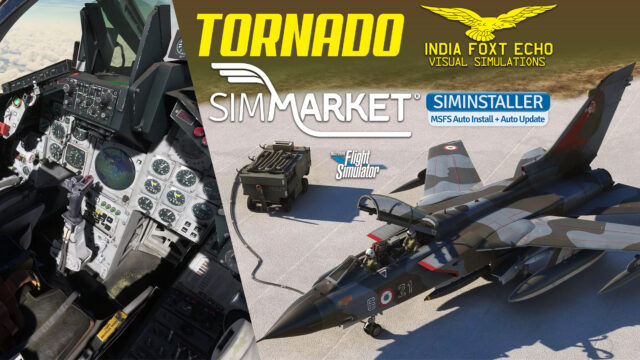
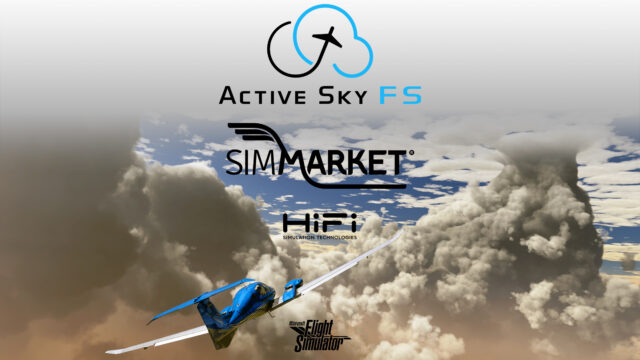
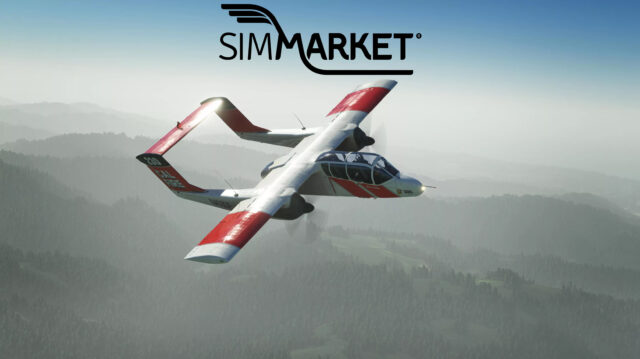
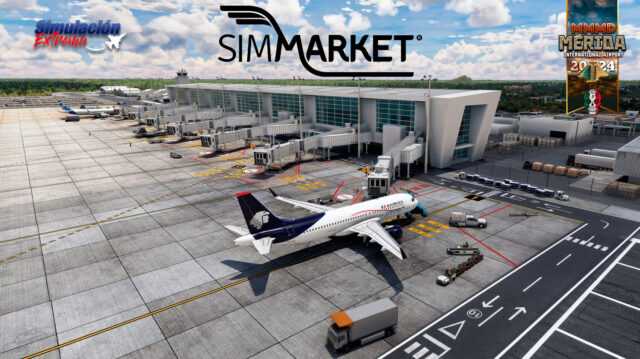
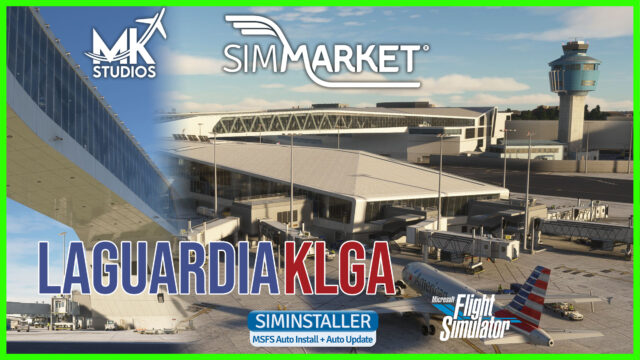

0 Responses
[spoilers issues], vista64, FSX, Saitek pads
Hi, on the ground, i have assigned my spoiler with the left rotating button of saitek joystick.
But seems like once engaged and back to normal, i still get the yellow message on screen and T/OFF Config wrong.
So how to cop out?
rgrds